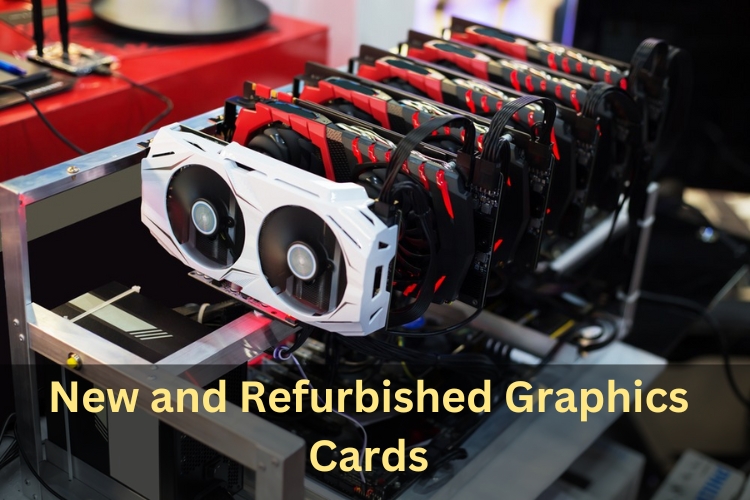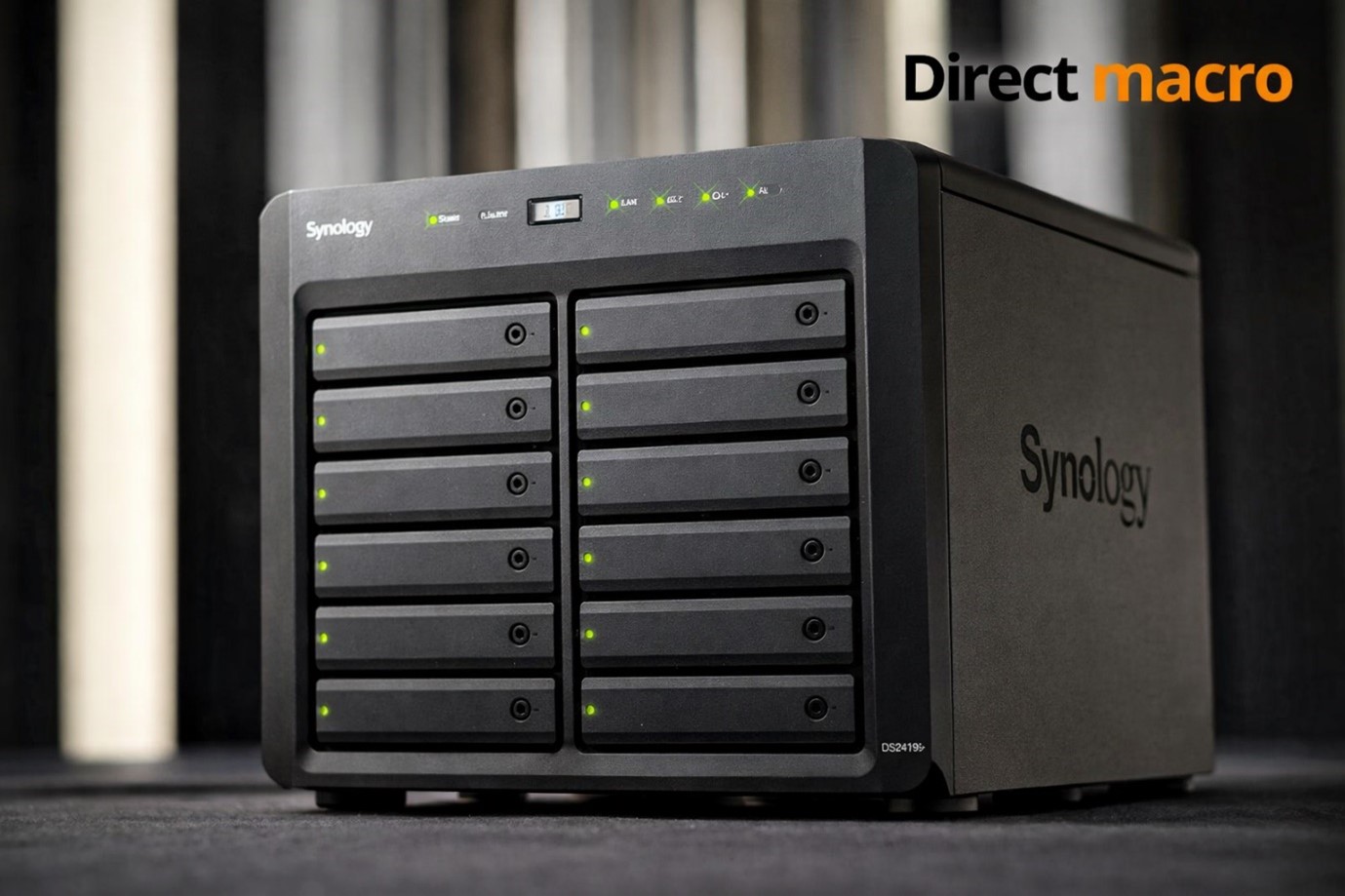What Graphics Card Do I Have – All You Need to Know
If you often encounter graphics or visual intensive tasks then finding out “what graphics card do I have” is critical for stable performance. Whether you are a gamer, content creator, or corporate, if you have a clear idea of what GPU you have, you can easily plan your next upgrade, and explore how to troubleshoot performance issues to enhance your visual experience.
In this comprehensive guide, we’ll walk you through the process of identifying your graphics card using various methods. Moreover, we’ll explain in detail how knowing your graphics card can make life easy for you.
So, keep reading till the end if you want to make informed and smart upgrades and save some bucks this year. Without further ado, let’s dive into the details.
What is a Graphics Card?
In simple words, a graphics card or GPU is a specialized electronic circuit designed to accelerate the creation and rendering of images, videos, and animations. GPUs are used in a variety of devices, including:
- Desktops
- Laptops
- Workstations
- Gaming consoles
Graphics cards can be integrated into the motherboard (integrated graphics) or installed as a separate component (dedicated graphics).
Why Knowing Your Graphics Card Matters – 9 Reasons to Consider
Simply said, knowing your graphics card better can nullify your PC’s potential performance bottlenecks. If you don’t know what you have, how can you decide whether to keep running with your existing system or upgrade to a new one?
Moving forward, here are the core reasons that further explain in detail why unlocking what GPU you have is necessary. Let’s get started!
Helps You to Analyze What You Can Do and What You Can’t
Understanding what your graphics card (GPU) can handle helps you know if it’s up to the task for what you want to do, like:
- Gaming
- Video editing
- Using professional software
Moreover, high-end games and applications like Adobe Premiere Pro or AutoCAD to name a few also require powerful GPUs. By knowing your GPU’s specs, you can see if your system meets the required standards, and eliminate the risk of lags or crashes.
Enable You to Nullify Compatibility Issues
It’s important to make sure your graphics card works well with the applications and software you use. Some programs and games are designed to work best with certain GPUs or need specific features like DirectX 12 or OpenGL 4.5.
If you can answer the question popping up in your mind, what graphics card do I have, you can ensure compatibility with your monitor’s resolution and refresh rate, and enjoy the best visual experience of your life.
Plus, you can ensure your power supply can handle your GPU’s power needs and that your motherboard has the right slots. So, no compatibility headaches ever!
Easily Diagnose and Troubleshooting Issues
When something goes wrong with your computer’s performance, like graphical glitches, crashes, or slow performance, knowing your GPU’s details can help diagnose the problem.
Moreover, you can bid farewell to critical issues like screen tearing or artifacts, since you can find solutions through updates or adjustments if you know what graphics card you have.
Furthermore, it also helps you figure out if the problem is with your GPU or other components like the CPU or RAM.
Make Informed and Smart Upgrades
You must unlock what graphics card do I have if you are thinking about upgrading your GPU for better performance. Knowing your current graphics card helps you make smart decisions. Moreover, you can compare your existing GPU with new options to see what kind of performance boost you might get.
Furthermore, VRAM size, core clock speed, and the number of processing cores are crucial in deciding the best upgrade. This way, you can choose an upgrade that fits your budget and meets your performance needs.
System Requirements for New Software – No Worries
New software, especially games, and professional applications, often come with updated system requirements. If you know what GPU I have, you can quickly check if your system can support the latest software or not.
As a result, you can save your time and money by avoiding purchases that your system can’t run efficiently. So, it’s a win-win situation for you.
Enhance Your Visual Experience
As a matter of fact, your graphics card greatly affects your visual experience. It doesn’t matter whether you’re gaming, creating content, doing corporate work, watching movies, or doing graphic design, GPU can enhance your overall experience to new levels.
That’s why understanding your GPU’s features, like support for high dynamic range (HDR), ray tracing, and high refresh rates, helps you optimize settings for the best visual quality.
As a result, you can balance performance and visuals based on what your GPU can do.
Energy Efficiency
Need of the Current Era
Graphics cards can differ a lot in power usage. If you are aware of your GPU’s power needs and efficiency, you can manage and optimize your system’s overall energy consumption.
Especially, if you’re concerned about energy use or have multiple GPUs in your system, you need to be absolutely sure about your GPU power requirements.
Stay Updated with the Market Value and Make Informed Resale Decisions
Lastly, if you’re thinking about selling or trading your current GPU, knowing its specs, performance benchmarks, and market value is important. This information helps you set a fair price and understand its demand in the market.
As a result, you can get better deals on reselling or trading up to a newer model. It’s time to get the best offer for your asset!
How to Check What Graphics Card Do I Have – Easy Methods You Can Go For
If You Are a Windows User, Check This One Out
System Information Tools – Windows Device Manager
Firstly, you need to right-click on the Start button and select “Device Manager.” Moving forward, in the Device Manager window, expand the “Display adapters” section.

Your graphics card will be listed under the “Display adapters” section.

Now, click on the desired GPU to answer your questions related to what graphics card I have.

System Information Tools – Windows System Information
Press the “Start” button and search for “System Information”. In the System Information window, expand the “Components” section.

Click on “Display” to see detailed information about your graphics card.

Here you find the details of your GPU including the name, manufacturer, and driver version.

Using Third-Party Software
GPU-Z
- Go to the TechPowerUp website and download GPU-Z.
- Open the software to view detailed information about your graphics card.
- The information includes the GPU model, memory type, and clock speeds.
Speccy
- Visit the Piriform website and download Speccy.
- Open the software and navigate to the “Graphics” section to see detailed information about your GPU. As simple as that!
If You Are a Mac User, Check This One Out
Utilizing “About This Mac”
- Click the Apple icon in the top-left corner and select “About This Mac.”
- Click “System Report” to open the System Information window.
- In the sidebar, select “Graphics/Displays”
- Unlock information about your graphics card, including the model and VRAM.
If You Are a Linux User, Check This One Out
Using Terminal Commands
- Press Ctrl + Alt + T to open the Terminal.
- Type lspci | grep -i vga and press Enter.
- Check what graphics you have.
Install mesa-utils by typing sudo apt-get install mesa-utils, then type glxinfo | grep “OpenGL renderer” to see detailed information about your graphics card.
Another Method to Identify Your Graphics Card
If you are someone who would prefer a hands-on approach to check your graphics card, then you can physically identify it by opening your PC case. Here is a step-by-step guide:
- Start by powering down your computer and disconnecting all cables.
- Remove the side panel of your PC case.
- Locate the graphics card, which is usually installed in a PCIe slot on the motherboard.
- It’s a rectangular circuit board with a cooling fan and ports for video output.
- The model and manufacturer details are typically printed on the card itself.

As a result, you can visually inspect and verify the specific model of your graphics card without relying on software tools or system information. Once you’ve noted the details, replace the side panel of your PC case and reconnect all cables before powering your computer back on.
Understand Your GPU Specifications For Making Informed Decisions
Understanding GPU specifications helps you evaluate the performance of your graphics card and determine if it meets the requirements of specific applications or games.
What Specifications to Look For?
- GPU Model: Identifies the specific model of your graphics card.
- Memory (VRAM): The amount of video memory available, which affects performance in graphics-intensive tasks.
- Clock Speed: The speed at which the GPU operates, influencing its performance.
- CUDA Cores / Stream Processors: The number of processing units within the GPU, affects its ability to handle parallel tasks.
- Driver Version: The software that allows your operating system to communicate with the GPU.
For instance, a higher VRAM is beneficial for 4K gaming and video editing, while more CUDA cores are advantageous for tasks like 3D rendering and scientific simulations.
When You Need to Upgrade Your GPU – 4 Signs You Should Know
At this point, you have a clear understanding of how to check graphics card information and specs in your computer. Now, the question is when to upgrade your GPU. Here are 4 factors that should dictate your upgrade decision.
- Performance Bottlenecks: If your system struggles with new games or professional software, an outdated GPU might be the culprit.
- Incompatibility with New Software: New applications may require features that older GPUs lack.
- Frequent Crashes and Glitches: Graphical issues can indicate a failing or insufficient GPU.
- Desire for Higher Resolutions and Settings: If you want to play games at higher resolutions or use advanced graphical settings, you may need a more powerful GPU.
Frequently Asked Questions (FAQs)
How to check what graphics card do I have without opening my PC?
You can use system information tools such as Windows Device Manager, System Information, or third-party software like GPU-Z and Speccy to answer your queries regarding what graphics card do I have without physically opening your computer.
Can integrated graphics be upgraded?
Integrated graphics are built into the motherboard and cannot be upgraded. However, you can add a dedicated graphics card to your system if it has a compatible expansion slot.
How do I check the memory of my graphics card in Windows 10?
Right-click on the desktop, select Display settings, scroll down, and click Advanced display settings, then click Display adapter properties. The Adapter tab will show the dedicated video memory.
What should I do if my graphics card is not detected?
If your graphics card is not detected, check for loose connections, ensure the card is properly seated in its slot, and update your BIOS and drivers. If the issue persists, the card may be faulty and require replacement.
Choosing the Right GPU for Your Needs
In a nutshell, it is important to clarify your thoughts of “what graphics card do I have” if you want to play smart. If you are still with us, then you are well-equipped with all the information required to decide when and why you should upgrade your GPU.
Lastly, if you are on the verge of making an upgrade, Direct Macro is your ultimate gateway. Talk to our experts and choose what suits your requirements and budget. Thanks for reading!
Do you need advice on buying or selling hardware? Fill out the form and we will return.

Sales & Support
(855) 483-7810
We respond within 48 hours on all weekdays
Opening hours
Monday to thursday: 08.30-16.30
Friday: 08.30-15.30









